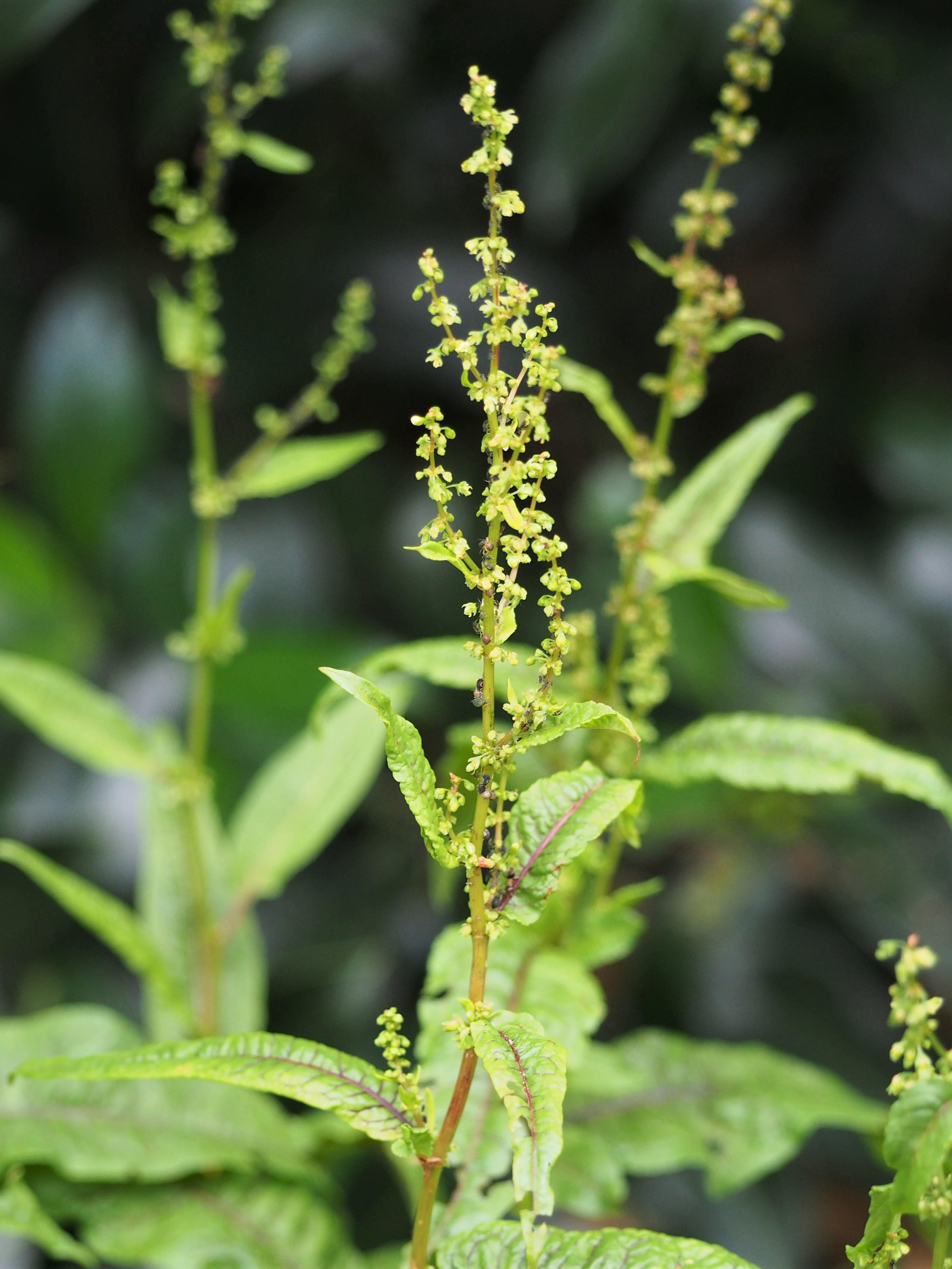
Redvein dock (Rumex sanguineus)
Redvein dock, also known as Blood dock
Redvein dock (Rumex sanguineus) is often cultivated for its attractive foliage, featuring striking red veins that make it a popular ornamental plant. Native to Eurasia and northern Africa, it is also edible and can be a flavorful addition to various dishes.
**Culinary Uses:**
- **Salads:** The young, tender leaves add a distinctive tartness and vibrant color.
- **Soups and stews:** Incorporating the leaves can enhance the overall flavor profile.
- **Garnishes:** Use for a visually appealing and slightly tangy touch.
- **Cooked greens:** The leaves can be sautéed or steamed, similar to spinach or chard.
**Precautions:**
- **Oxalic Acid Content:** Due to its oxalic acid content, consumption should be moderate, as excessive intake may lead to stomach discomfort or exacerbate conditions like kidney stones.
- **Leaf Maturity:** Opt for young leaves, which are more tender and less bitter; older leaves can be tough and have a stronger, more bitter taste.
- **Proper Identification:** Ensure correct identification to avoid confusing it with inedible dock species.
Incorporate redvein dock thoughtfully into your diet, especially if you have pre-existing health conditions, and consult with a healthcare provider if necessary.
Key Facts About Redvein dock
Attributes of Redvein dock
Scientific Classification of Redvein dock
Toxicity
Ingestion